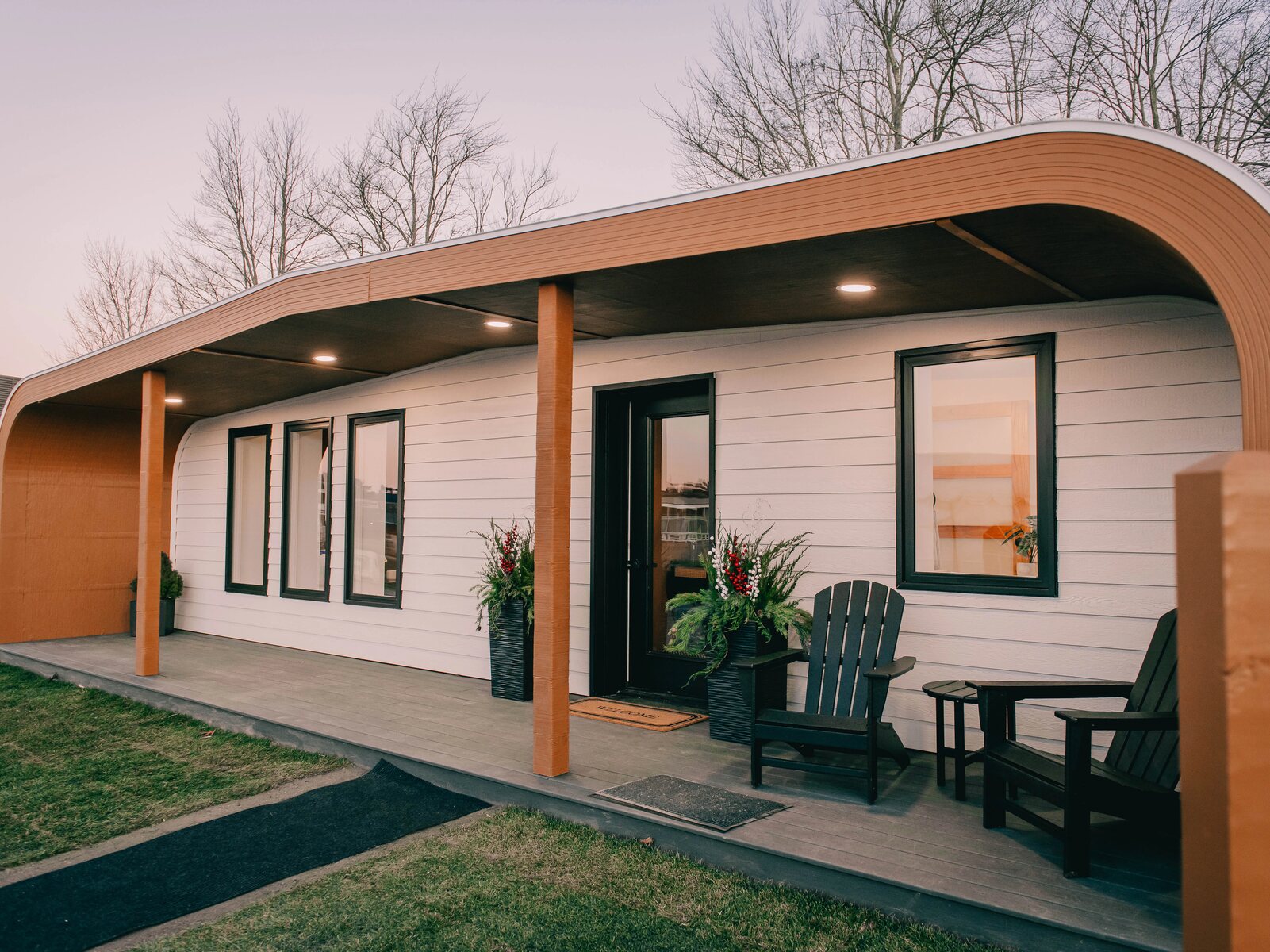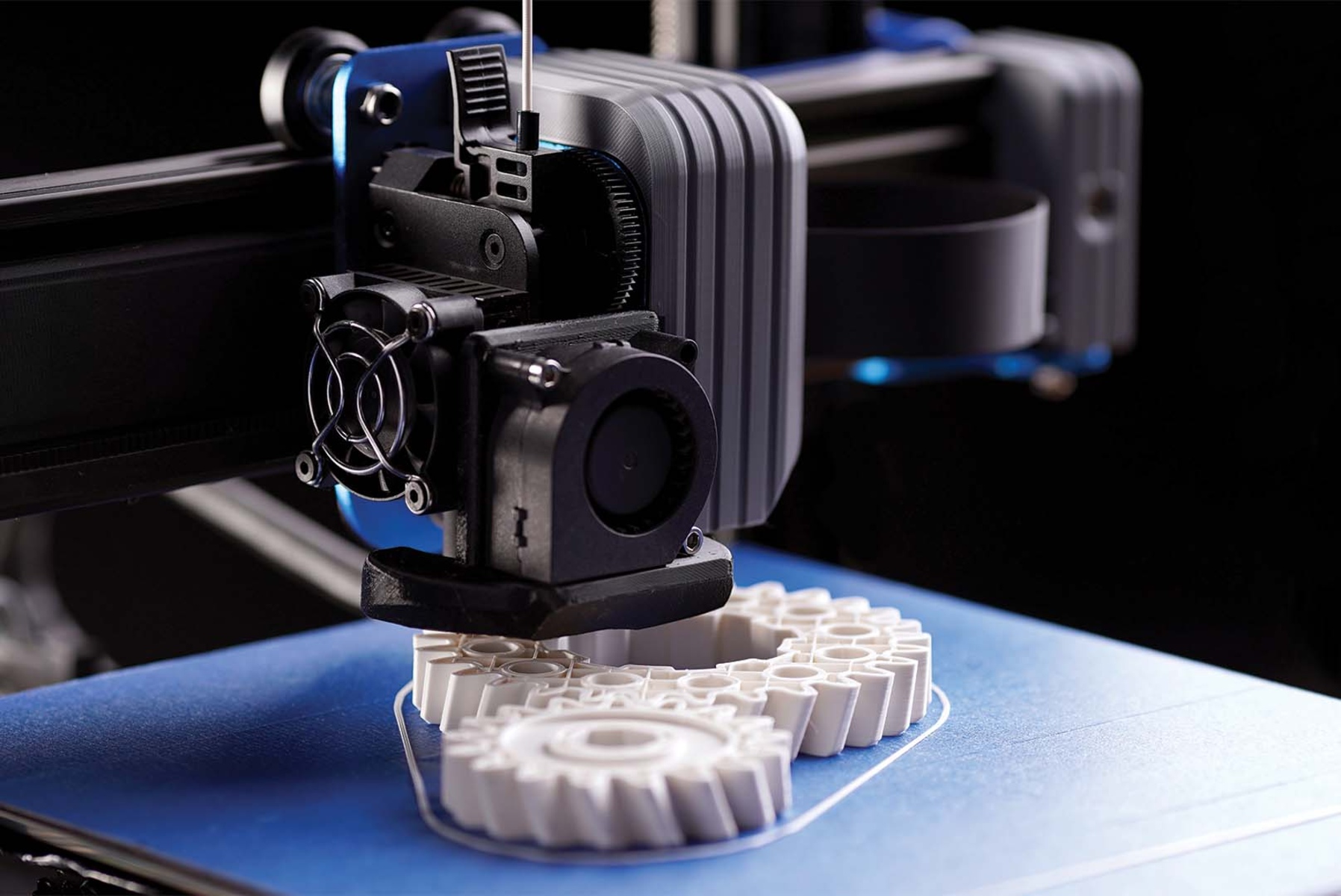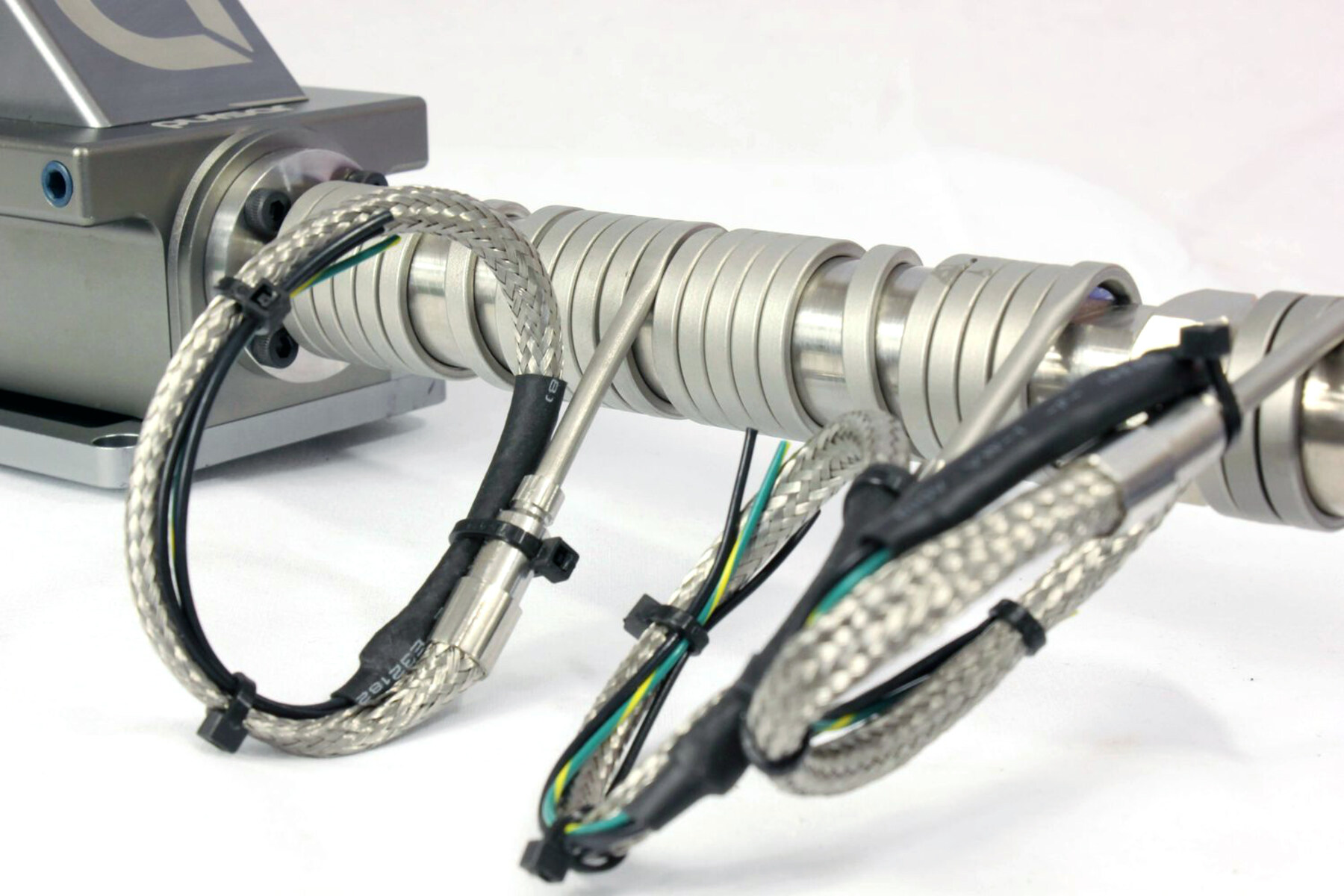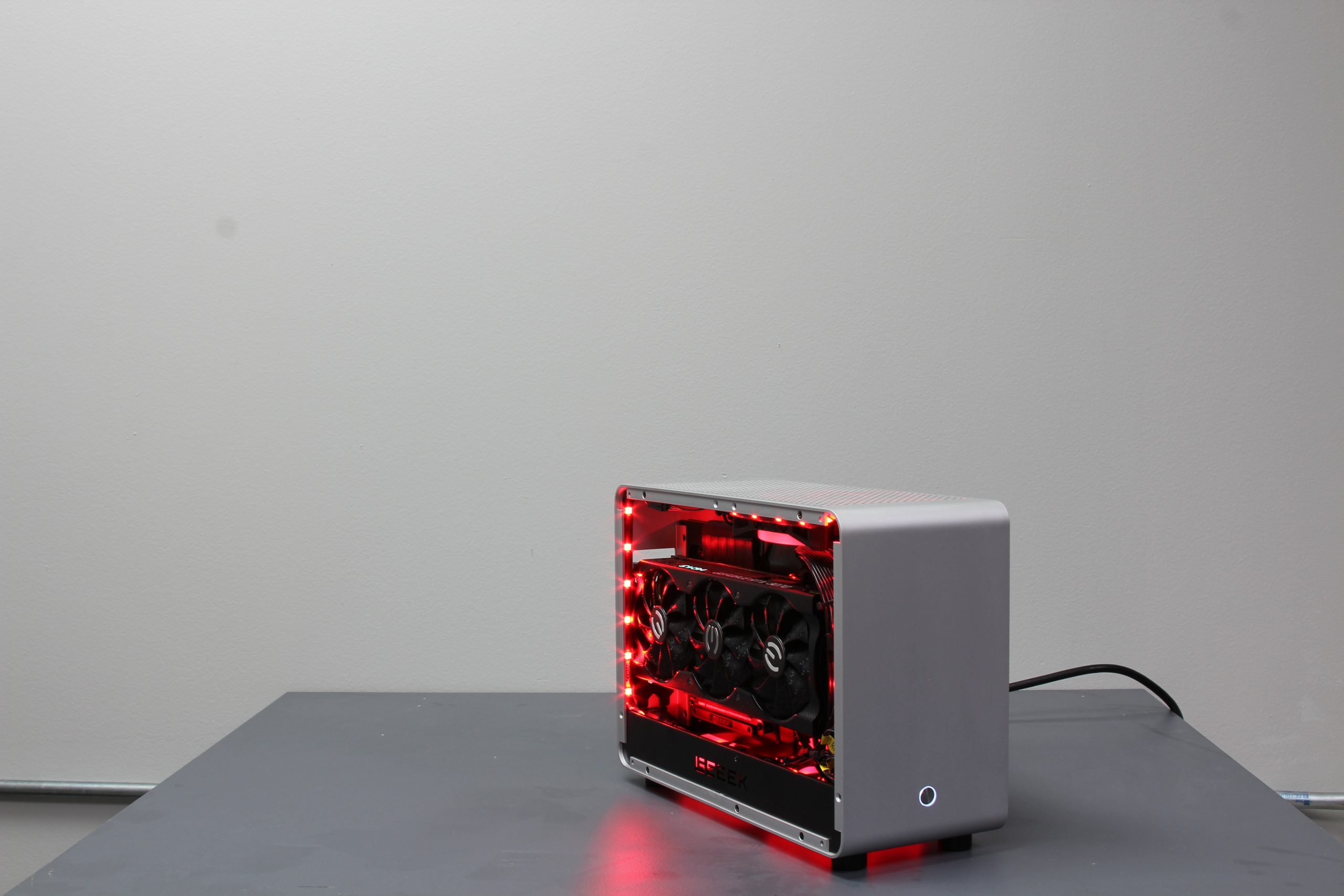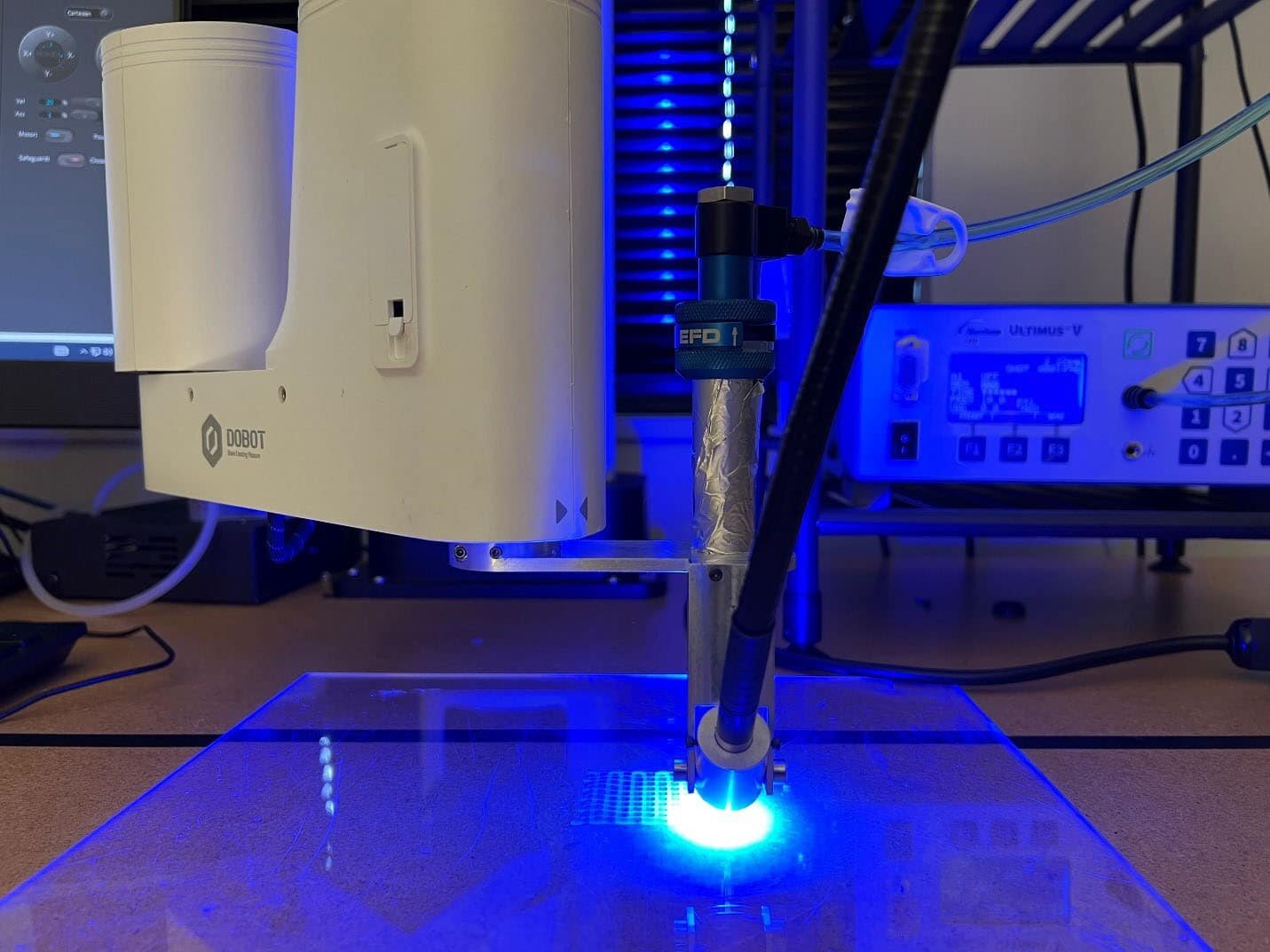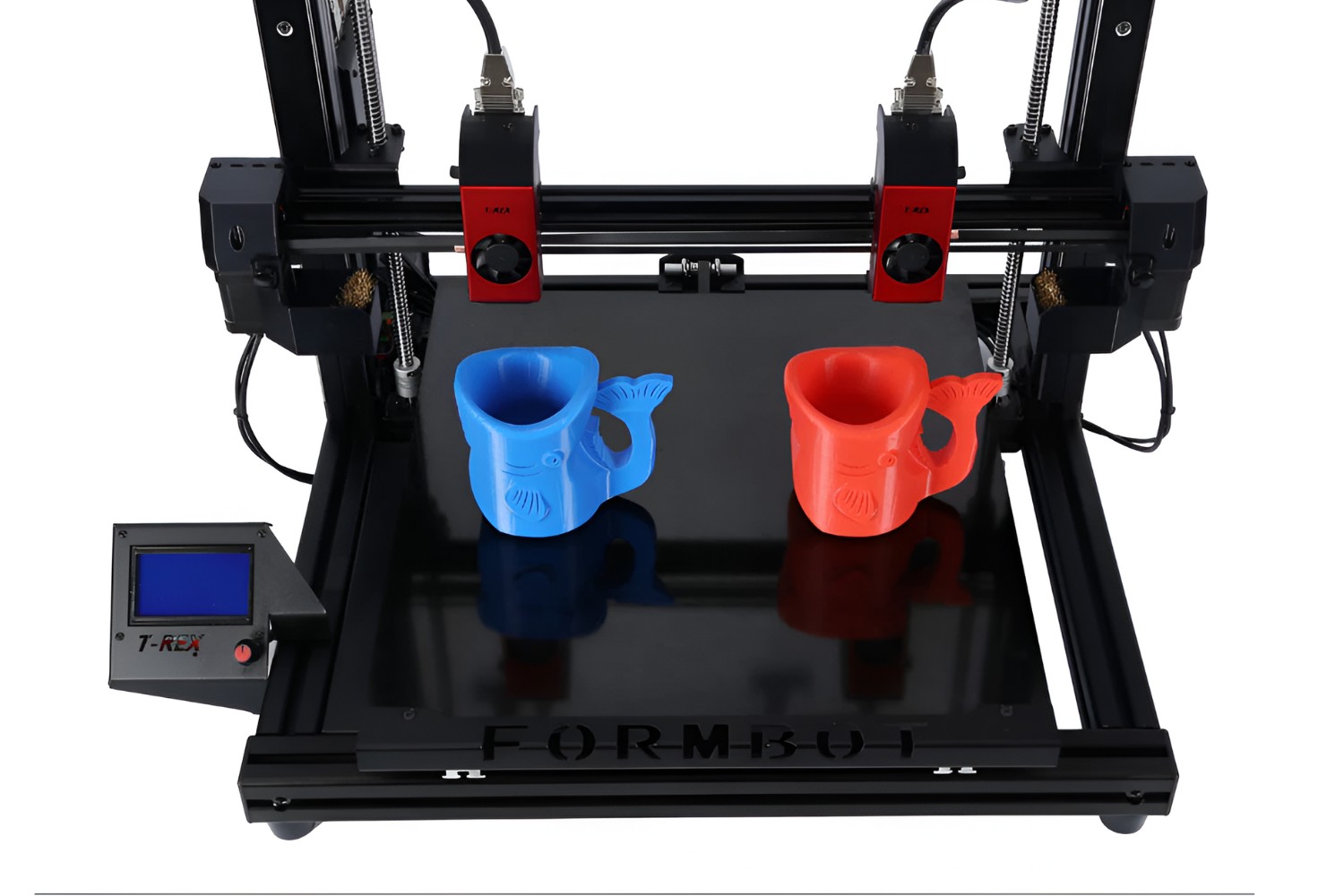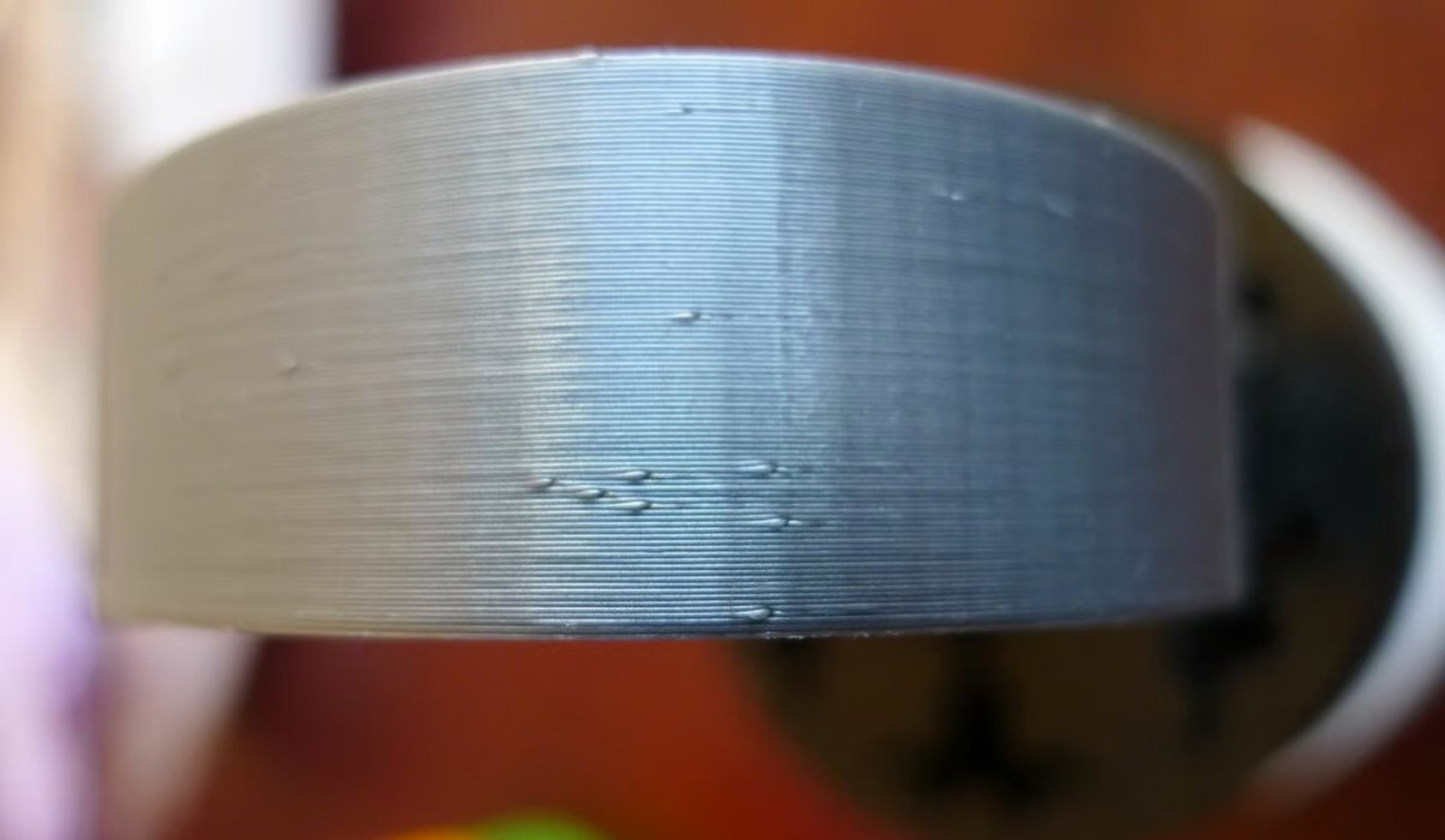Introduction
The advancements in technology have revolutionized various aspects of our lives, and the construction industry is no exception. One such revolutionary innovation is 3D printing, which has gained immense popularity in recent years. 3D printing, also known as additive manufacturing, allows the creation of three-dimensional objects by layering materials on top of each other.
This groundbreaking technology has now extended its capabilities to printing houses, paving the way for the era of 3D printed houses. As the name suggests, 3D printed houses are constructed using 3D printers that can build entire structures layer by layer, eliminating the need for traditional construction methods.
With the promise of faster, more cost-effective, and sustainable house construction, 3D printed houses have garnered significant attention worldwide. This article will delve into the world of 3D printed houses, exploring the process, materials used, benefits, limitations, and future possibilities.
The concept of 3D printing houses may sound like something out of a science fiction novel, but it has quickly become a reality. Architects, engineers, and innovators have embraced this technology as a solution to the challenges faced by the construction industry, such as labor shortages, high costs, and environmental impact.
By harnessing the power of 3D printing technology, it is now possible to construct houses with intricate designs, customized features, and unparalleled speed. The traditional construction process, which often takes months or even years, can be significantly reduced to a fraction of the time with 3D printing.
Moreover, 3D printed houses offer a more sustainable approach to building. The technology allows for the use of eco-friendly materials and minimizes waste generation. This reduces the carbon footprint and contributes to a greener and more environmentally conscious construction industry.
In addition to the environmental benefits, 3D printed houses also provide cost advantages. The streamlined construction process reduces labor and material costs, making housing more affordable and accessible to a larger population. This has the potential to address the global housing crisis and provide shelter for those in need.
In the following sections, we will explore the process of 3D printing houses, discuss the materials used, examine the benefits and limitations of this technology, and look into real-life examples of 3D printed houses. We will also delve into the future possibilities and potential impact that 3D printed houses can have on the construction industry as a whole.
What is 3D printing?
Before diving into the world of 3D printed houses, it is essential to understand the technology behind it. 3D printing, also known as additive manufacturing, is a process of creating three-dimensional objects by layering materials on top of each other.
The process begins with a digital model of the object being created. This model is typically created using computer-aided design (CAD) software or obtained through 3D scanning. The digital model is then sliced into multiple thin layers, which the 3D printer will use as a blueprint for constructing the object.
The 3D printer itself is a sophisticated machine that follows precise instructions to build the object layer by layer. It does this by depositing or solidifying materials, usually in the form of liquid resins or powdered substances, onto a platform. The printer continues to add layers until the object is complete.
There are various 3D printing technologies available, each with its own specific method of layering materials. Some commonly used technologies include fused deposition modeling (FDM), stereolithography (SLA), and selective laser sintering (SLS). Each technology has its own advantages and limitations, depending on the materials used, the speed of printing, and the level of detail required.
Unlike traditional manufacturing methods, which involve subtracting materials from a solid block, 3D printing is an additive process. This means that it can create complex shapes and intricate designs that would be challenging or impossible to achieve with traditional methods.
3D printing has already made a significant impact in various industries, including healthcare, aerospace, automotive, and consumer products. It has revolutionized the way prototypes are made, allowing for faster and more cost-effective product development. In the medical field, 3D printing has enabled the production of customized implants and prosthetics, improving patient outcomes.
Now, this revolutionary technology has extended its reach to the construction industry, opening up a whole new world of possibilities. With the ability to 3D print houses, architects and engineers can push the boundaries of design, create sustainable structures, and overcome the limitations of traditional construction methods.
In the next section, we will explore the rise of 3D printed houses, examining how this technology is transforming the way we build homes.
The rise of 3D printed houses
In recent years, 3D printed houses have been gaining traction as a viable solution to many of the challenges faced by the construction industry. The concept of 3D printing houses may still be in its infancy, but it has the potential to disrupt and revolutionize the way we think about home construction.
One of the key factors contributing to the rise of 3D printed houses is the increasing demand for affordable and sustainable housing. The global housing crisis has led to a shortage of affordable homes, making it difficult for many individuals and families to find suitable living spaces. Traditional construction methods are often time-consuming and costly, making it challenging to address this housing shortage effectively.
However, 3D printing offers a promising alternative. By leveraging the capabilities of 3D printers, houses can be constructed faster, at a lower cost, and with reduced environmental impact. This makes 3D printed houses an attractive solution for governments, organizations, and communities striving to provide affordable and sustainable housing options.
The rise of 3D printed houses is also fueled by advancements in material science and technology. Researchers and engineers are continually exploring new materials that are suitable for 3D printing, including concrete mixtures, plastics, and even recycled materials. These materials are tested for their strength, durability, and sustainability to ensure that the final structure meets building standards and regulatory requirements.
Another factor driving the rise of 3D printed houses is the growing interest and investment in the technology. Major companies and startups are exploring this innovative construction method, investing in research, development, and large-scale printing capabilities. Governments and organizations are also providing support and incentives to promote the adoption of 3D printed housing solutions.
Real-world examples of 3D printed houses have demonstrated the feasibility and potential of this technology. One notable example is the “Apis Cor” project, which successfully 3D printed a house in just 24 hours. This achievement showcased the speed and efficiency of 3D printing in construction, while also highlighting the design flexibility that this technology offers.
The rise of 3D printed houses is not without its challenges, though. There are still regulatory and safety concerns that need to be addressed, as well as limitations in the size and complexity of structures that can be printed. However, as technology continues to advance, these challenges are being tackled, and more significant strides are being made towards mainstream adoption of 3D printed houses.
In the next section, we will explore the various benefits of 3D printed houses, highlighting the advantages they offer over traditional construction methods.
Benefits of 3D printed houses
The emergence of 3D printed houses brings with it a host of benefits that have the potential to revolutionize the construction industry. Here are some of the key advantages of 3D printed houses:
1. Speed and efficiency: 3D printing houses allows for significantly faster construction compared to traditional methods. By automating the construction process, 3D printers can create entire structures in a matter of hours or days. This increased speed not only reduces labor costs but also enables faster occupancy of homes, addressing the urgent need for housing in many areas.
2. Cost-effectiveness: The streamlined construction process of 3D printed houses can lead to cost savings. By reducing the need for manual labor and minimizing waste, 3D printed houses have the potential to be more economical than traditional construction methods. These cost savings can make housing more affordable and accessible, particularly in areas with high construction costs.
3. Design flexibility: 3D printing technology allows for greater design freedom and customization. Complex architectural designs and intricate structures that were once difficult or expensive to construct with traditional methods can now be achieved with 3D printed houses. This opens up endless possibilities for innovative and unique designs, making each house truly distinct.
4. Sustainability: The construction industry is responsible for a significant amount of waste and environmental impact. 3D printed houses offer a more sustainable alternative by reducing material waste and utilizing eco-friendly materials. Additionally, the precision of 3D printing can minimize energy consumption during the construction process, making it a greener option.
5. Strength and durability: 3D printed houses can be built to be structurally sound and durable. The layer-by-layer construction process allows for the precise placement of materials, resulting in strong and stable structures. These houses can withstand natural disasters, making them a viable option for areas prone to earthquakes, hurricanes, and other hazardous events.
6. Accessibility: Due to the cost-efficiency of 3D printed houses, they have the potential to address the global housing crisis and provide affordable housing options for low-income communities. It can also be a solution in remote or disaster-stricken areas where traditional construction methods are not easily accessible.
The benefits of 3D printed houses extend beyond these points, and as the technology continues to evolve, more advantages may arise. While there are still challenges to overcome, such as regulatory and safety considerations, the potential impact of 3D printed houses on the construction industry cannot be ignored.
Next, we will explore the process of 3D printing houses, delving into the steps involved and the materials used.
The process of 3D printing houses
The process of 3D printing houses involves several steps, each contributing to the creation of a complete and structurally sound structure. While the exact process may vary depending on the 3D printing technology and materials used, the general steps can be outlined as follows:
1. Preparation: The first step in 3D printing a house is the preparation phase. This involves creating a digital model of the house using computer-aided design (CAD) software. The model is then processed and sliced into multiple layers, which serve as the building blocks for the 3D printing process.
2. Foundation: The construction of a 3D printed house typically starts with the creation of a strong and stable foundation. This foundation can be built using traditional construction methods or can be 3D printed using a concrete mixture. The foundation provides a solid base for the rest of the structure to be built upon.
3. Layering: Once the foundation is in place, the 3D printing process begins. The 3D printer, controlled by the digital model, starts depositing or solidifying the chosen building material layer by layer. The material is meticulously placed according to the design specifications, creating the walls, floors, and other structural components of the house.
4. Integration: As the layers are built, the 3D printer can integrate other elements into the structure, such as electrical wiring, plumbing, and insulation. This integration eliminates the need for subsequent installation, reducing construction time and costs.
5. Finishing touches: Once the basic structure is complete, additional finishing touches can be added. These may include smoothing the surfaces, applying coatings or finishes, and installing windows, doors, and fixtures. These final touches give the 3D printed house a refined and polished appearance.
It’s worth noting that the process of 3D printing houses can vary depending on the technology used. For example, some printers may use robotic arms to extrude the building material, while others may use a gantry system to move the printer head. The choice of materials can also vary, including concrete mixtures, polymers, or other specialized materials suitable for 3D printing.
While 3D printing houses offers a more efficient and automated construction process, it is essential to have skilled technicians and engineers overseeing the operation. These professionals ensure the accurate execution of the design and monitor the quality of the print throughout the process.
The process of 3D printing houses has the potential to transform the construction industry, providing faster, more cost-effective, and sustainable housing solutions. As the technology continues to advance, we can expect to see further innovations in the process, material choices, and design possibilities.
Next, we will explore the materials commonly used in the 3D printing of houses, highlighting their properties and suitability for construction purposes.
Materials used in 3D printing houses
The choice of materials plays a crucial role in the successful construction of 3D printed houses. These materials need to be strong, durable, easily workable, and suitable for the 3D printing process. Several materials have been tested and proven to be effective for building 3D printed houses. Here are some commonly used materials:
1. Concrete mixtures: Concrete is one of the most widely used materials in the construction industry, and it has also found its place in 3D printing houses. Specialized concrete mixtures, known as 3D printable concrete or geopolymer concrete, are formulated to have the necessary flow properties for the printing process. These mixtures typically consist of cement, aggregates, additives, and water, providing the strength and stability required for constructing structural elements.
2. Polymers: Various polymers, such as acrylonitrile butadiene styrene (ABS) and polylactic acid (PLA), are commonly used for 3D printing. These materials are lightweight, versatile, and easy to work with. However, they are more commonly used in smaller-scale 3D printing projects, such as furniture or decorative items.
3. Composite materials: Composite materials, which consist of a combination of different elements, are also being explored for 3D printing houses. For example, fiber-reinforced polymer composites (FRPs) are known for their high strength-to-weight ratio and durability. These composites can be reinforced with fibers such as carbon or glass to enhance their structural properties.
4. Recycled materials: In an effort to promote sustainability, researchers and innovators are exploring the use of recycled materials in 3D printed houses. This includes recycled concrete waste, plastic waste, or even construction site waste. By utilizing these materials, the environmental impact of construction can be reduced, and waste can be repurposed effectively.
It’s important to note that different 3D printing technologies may require specific materials. For example, some printers are optimized for concrete, while others are better suited for polymer-based materials. The choice of material also depends on factors such as structural requirements, desired aesthetics, and local availability.
The development of innovative materials specifically designed for 3D printing houses is an ongoing area of research. Researchers are exploring new compositions and mixtures to improve the strength, durability, and sustainability of 3D printed structures. Advances in materials science will continue to expand the possibilities and applications of 3D printed houses.
In the following section, we will discuss the challenges and limitations that currently exist in the 3D printing of houses and how these barriers are being overcome.
Challenges and limitations of 3D printing houses
While the concept of 3D printing houses holds immense promise, there are several challenges and limitations that need to be addressed for widespread adoption and implementation. Some of the main challenges include:
1. Regulatory and safety considerations: The construction industry is heavily regulated to ensure the safety and well-being of occupants. Incorporating 3D printing in house construction requires the development of new regulations and building codes specifically tailored to this technology. Ensuring that 3D printed houses meet safety standards while accounting for variations in design and materials is a crucial challenge that needs to be addressed.
2. Scalability: While 3D printing offers the potential for fast and efficient construction, the current scalability of this technology remains a limitation. Most 3D printers used for house construction are limited in size, constraining the maximum dimensions of the printed structures. Scaling up the technology to print larger structures and entire communities will require advancements in printer size, material handling, and construction techniques.
3. Design limitations: Although 3D printing enables greater design freedom, there are still limitations to consider. Complex architectural designs may pose challenges in terms of material flow, structural integrity, and support structures during printing. Overcoming these limitations and ensuring that designs can be successfully translated into 3D printed structures is an ongoing area of research.
4. Material limitations and availability: The availability of suitable materials for 3D printing houses can be a constraint. While there are concrete mixtures and polymers specifically formulated for 3D printing, their widespread availability and cost-effectiveness may vary depending on the region. Developing customized materials that are tailored to the 3D printing process and optimizing their properties for construction will be a key focus in overcoming this limitation.
5. Skill and expertise: Operating and managing the complexities of 3D printers requires skilled technicians and engineers. Ensuring that a qualified workforce is trained in using and maintaining the 3D printing equipment is essential for successful and safe construction. Upskilling and training programs will be crucial to overcome this challenge.
Despite these challenges, significant progress is being made to overcome these limitations. Researchers, industry professionals, and innovators are actively working on developing new approaches, materials, and technologies to improve the scalability, safety, and efficiency of 3D printing houses. As technology continues to evolve and mature, these challenges are likely to be addressed, paving the way for a future where 3D printed houses are a common sight.
In the next section, we will explore real-life examples of 3D printed houses and the impact they have had on the construction industry.
Examples of 3D printed houses
The emergence of 3D printed houses has led to numerous innovative projects around the world that showcase the potential of this technology. Here are a few notable examples:
1. Apis Cor, Russia: One of the pioneers in 3D printed house construction, the Apis Cor project gained recognition for constructing a 38 square meter (409 square feet) house in just 24 hours. The project utilized a mobile 3D printer and a special mixture of concrete to build the walls and partitions. This demonstrated the speed and efficiency of 3D printing in housing construction.
2. TECLA, Italy: TECLA is a collaboration between Mario Cucinella Architects and WASP (World’s Advanced Saving Project). The project aims to showcase sustainable and affordable housing solutions using 3D printing. The houses are built using locally sourced soil mixed with a natural binder for the construction of curved walls. TECLA demonstrates how 3D printing can promote eco-friendly and community-oriented architecture.
3. Perioperative House, Germany: Designed by HENN and COBOD, the Perioperative House showcases the versatility of 3D printing. This project focuses on constructing customizable medical facilities that can be quickly deployed in emergency situations. The 3D printed building includes separate areas for surgery, recovery, and intensive care, highlighting the potential for rapid healthcare infrastructure development.
4. Yhnova, France: The Yhnova project in France is a pioneering effort in affordable housing. The project features a 95-square-meter (1,022 square feet) 3D printed social housing unit. The house was built using a custom 3D printer that deposited layers of a specially formulated concrete mixture. Yhnova demonstrates the potential of 3D printing for addressing the global housing crisis.
These examples illustrate the diverse applications of 3D printed houses, from emergency housing to sustainable communities and affordable housing initiatives. They highlight the speed, cost-effectiveness, and design capabilities that 3D printing brings to the construction industry.
While these projects are impressive, it is important to note that they represent early advancements in 3D printed house construction. As the technology matures and becomes more widely adopted, we can expect to see even more ambitious and larger-scale projects in the future.
In the next section, we will explore the future possibilities of 3D printed houses and the potential impact they may have on the construction industry.
Future possibilities of 3D printed houses
The future of 3D printed houses holds immense potential for transforming the construction industry and shaping the way we live. Here are some of the possibilities that lie ahead:
1. Customization and personalization: 3D printing offers unprecedented design flexibility, allowing for customized and personalized homes. Individuals will have the opportunity to create unique spaces that suit their specific needs and preferences. From intricate architectural details to personalized floor plans, 3D printed houses can cater to individual lifestyles.
2. Sustainable construction: As sustainable practices become increasingly important, 3D printing houses can address environmental concerns. Utilizing eco-friendly and recyclable materials, optimizing energy efficiency, and reducing waste, 3D printed houses have the potential to significantly reduce the carbon footprint of construction.
3. Disaster relief and emergency housing: 3D printed houses have the capacity to rapidly provide shelter in disaster-stricken areas. With their quick construction time and cost-effectiveness, these houses can serve as a viable solution to address immediate housing needs in the aftermath of natural disasters or during humanitarian crises.
4. Multi-material printing: Advancements in 3D printing technology are paving the way for the use of multiple materials in house construction. This could include integrating electrical and plumbing systems directly into the walls, creating multi-layered structures with varying properties, and incorporating smart technologies for energy efficiency and automation.
5. Off-world construction: The prospect of 3D printing houses extends beyond Earth. In space exploration and colonization scenarios, 3D printing could be used to construct habitats on other planets or in space stations. This would eliminate the need to transport building materials to remote locations and enable sustainable living environments in extraterrestrial settings.
6. Mass production of affordable housing: One of the most significant possibilities of 3D printing houses is its potential for mass production. With the ability to print multiple houses simultaneously and at a lower cost compared to traditional construction methods, 3D printing has the potential to revolutionize the affordable housing sector and address the global housing crisis.
These future possibilities are not far-fetched dreams; they are being actively explored and developed by researchers, architects, and industry professionals. The ongoing advancements in 3D printing technology, materials science, and construction techniques are fueling the realization of these possibilities.
While there are still challenges to overcome, the future of 3D printed houses promises a new era of sustainable, customizable, and accessible housing. It has the potential to reshape the construction industry, making it more efficient, affordable, and environmentally friendly.
In the concluding section, we will summarize the key points discussed and emphasize the transformative impact of 3D printed houses on the construction industry.
Conclusion
The rise of 3D printed houses represents a significant shift in the construction industry, offering faster, more cost-effective, and sustainable housing solutions. By harnessing the power of 3D printing technology, architects and engineers have the ability to design and construct houses with greater flexibility, efficiency, and customization.
The benefits of 3D printed houses are undeniable. They can be constructed at a fraction of the time and cost of traditional methods, making housing more affordable and accessible. The use of eco-friendly materials and reduced waste generation also contributes to a greener and more sustainable construction industry.
However, challenges and limitations still exist. Regulatory considerations, scalability issues, design limitations, and material availability are areas that require continued research and development to overcome. Nevertheless, significant progress is being made, and these challenges are being addressed, paving the way for a future where 3D printed houses become the norm rather than the exception.
Real-life examples, such as the Apis Cor project and TECLA, have demonstrated the potential of 3D printed houses in various contexts, including emergency housing and sustainable communities. These examples inspire further innovation and showcase the transformative impact of 3D printing on the construction industry.
Looking ahead, the future of 3D printed houses holds immense potential. The ability to customize homes, construct sustainable buildings, provide emergency housing, utilize multi-material printing, and even expand into extraterrestrial construction are just some of the possibilities on the horizon.
As technology continues to advance and more research is conducted, the limitations of 3D printed houses will be overcome, and their benefits will become even more substantial. It is an exciting time for the construction industry as it embraces the potential of 3D printing to create homes that are not only efficient but also designed with a focus on the needs and preferences of individuals and communities.
In summary, 3D printed houses are revolutionizing the construction industry, offering speed, cost-effectiveness, sustainability, and design innovation. The future of 3D printed houses is bright, with vast possibilities for transforming the way we build and live. With ongoing advancements and a strong visionary approach, 3D printed houses have the potential to reshape the way we perceive and create homes.







